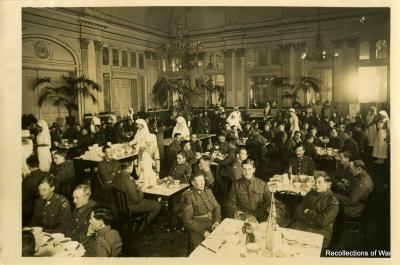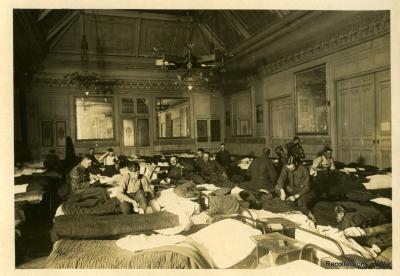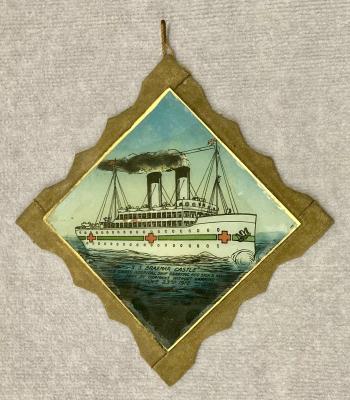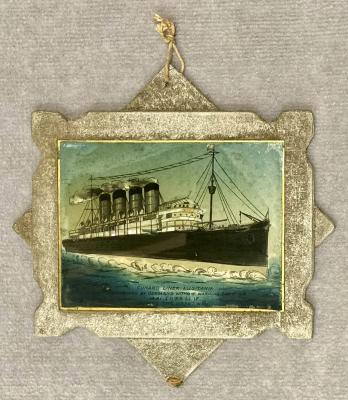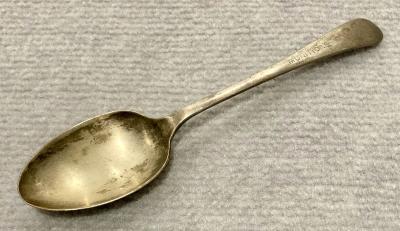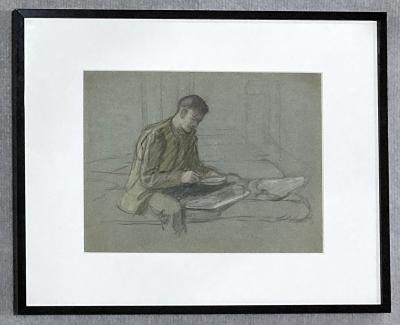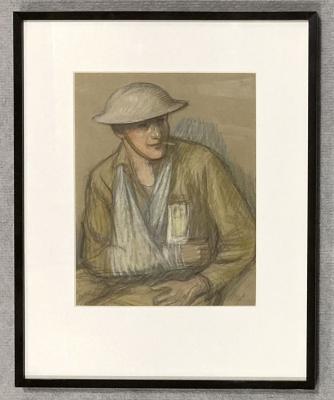Map showing location of The British Army & Navy Leave Club in Paris
c. 1917 - 1919'Daily Mail' Paris pocket-map highlighting the location of the British Army and Navy Leave Club in central Paris, as well as other important landmarks including churches, theatres, museums, monuments, attractions, civic buildings and train stations.
It is made from thin cream paper with a brown border. The map has the streets printed in black, the main thoroughfares in brown, and the railway lines and stations in dark blue. There is a large red circle around the location of the leave club, with an arrow pointing towards it.
Fifty six numbered locations are pin-pointed on the map, with 21 printed in the upper left corner and the remainder in the lower left, all in blue lettering. The title of the map and the legend relating to the roads and railways appears in the lower right corner.
The text 'Daily Mail Paris Pocket-Map, Head Offices 34-36 Rue du Sentier Paris' is written above the border across the top of the map in brown lettering, while the newsppaer editor's details appear on the lower left.
The reverse of the map is plain. It has been foilded into four and is showing signs of age, having tears, creases and discolouration.
According to the Imperial War Museum, "early in 1917, when the Australians and Canadians visited Paris on leave in very large numbers, Miss Lily Butler opened a "Corner of Blighty", the pioneer leave club in Paris, to help them to spend their time as pleasantly and profitably as possible. Everything was given free of charge, and a staff of 45 voluntary women workers entertained 44,000 men in the first 10 months of the 2 years for which the club was open.
Six months later the British Army and Navy Leave Club was opened and was the pioneer residential club in Paris for soldiers and sailors on leave. Baron D'Erlanger lent the house, and English singer and actress, Miss Decima Moore, and the Rev. A. S. V. Blunt were honorary secretaries. In the two years that it was open 59,102 men were registered and 701,546 meals were served. A body of uniformed Women Guides looked after the comfort of the men, and free entertainments on a large scale were organised.
As a result of the success of this club, the British Empire Leave Club at Cologne was originated and organised on the same lines by Miss Decima Moore, Hon. Director-General, who raised the funds with a London Committee under Baron D'Erlanger as chairman. Each department was conducted by a voluntary woman worker drawn from one of the approved women's war organisations, who wore the uniform of her society, and did her last piece of war-work for the British in an officially recognised institution opened at the invitation of the army."
In addition to this map, two photographs of the interior of the club are held in the collection, as well as a medallion.
Details
Details
Related Objects
Related Objects
Other items from Recollections of War
- Photograph showing interior of the British Army & Navy Leave Club
- Photograph showing accommodation at the British Army & Navy Leave Club
- Queensland Ambulance Transport Brigade (Q.A.T.B.) silver badge
- Queensland Ambulance Transport Brigade (Q.A.T.B.) Ladies Committee silver badge
- Lead button from clothing worn by munitions worker
- Souvenir button welcoming 'The Digger Prince' to Australia
- Edith Cavell Army Nurses' Fund badge 1917
- Reverse glass painting memorial to hospital ship S.S. Braemar Castle
- Reverse glass painting memorial to Cunard Liner Lusitania
- Allbrite nickel silver spoon stamped with 'Munitions'
- 'Wounded in foot on bed' by Florence White 1918
- 'Wounded smoking cigarette' by Florence White 1918
Scan this QR code to open this page on your phone ->

